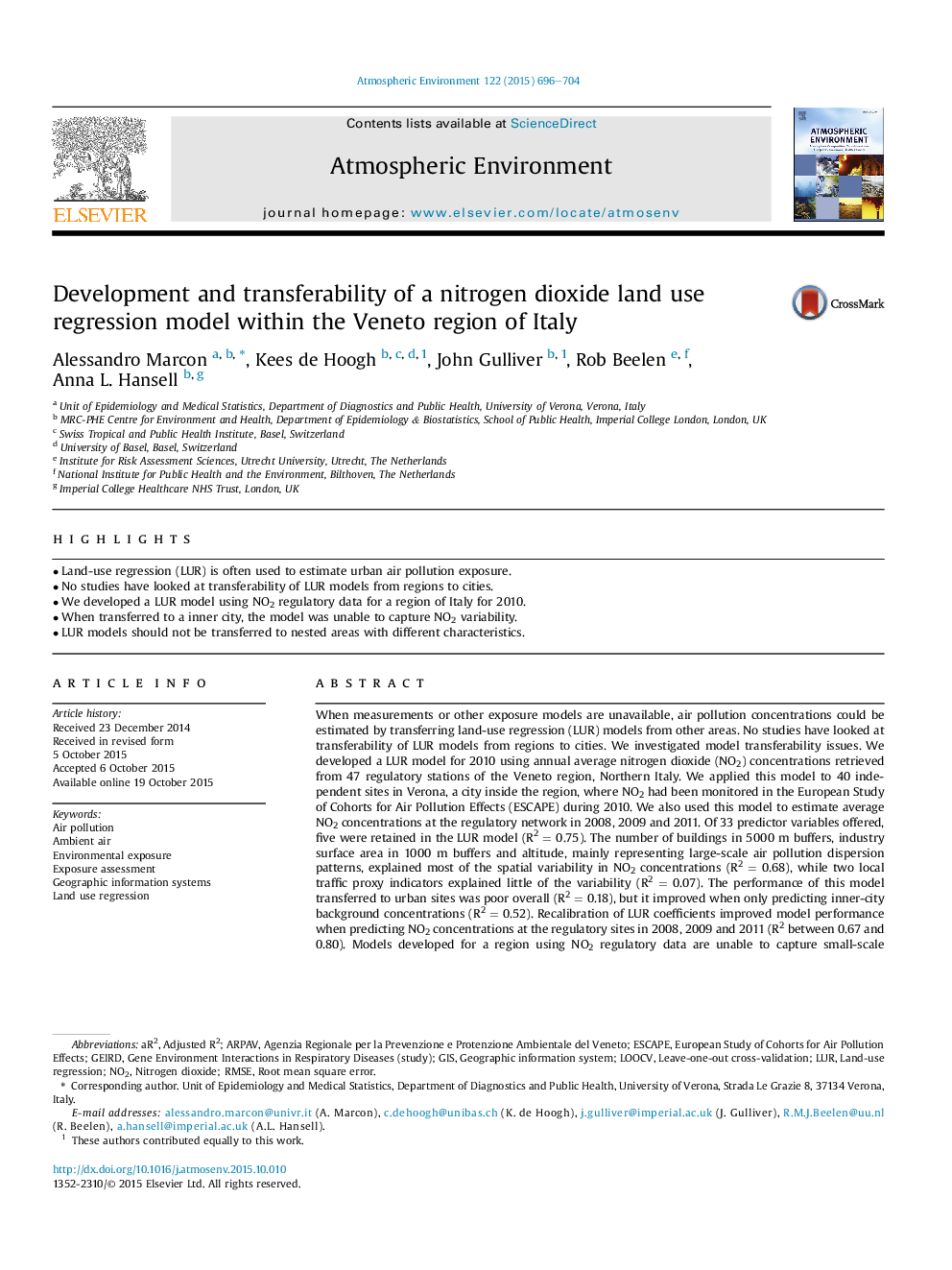| کد مقاله | کد نشریه | سال انتشار | مقاله انگلیسی | نسخه تمام متن |
|---|---|---|---|---|
| 6337086 | 1620349 | 2015 | 9 صفحه PDF | دانلود رایگان |
- Land-use regression (LUR) is often used to estimate urban air pollution exposure.
- No studies have looked at transferability of LUR models from regions to cities.
- We developed a LUR model using NO2 regulatory data for a region of Italy for 2010.
- When transferred to a inner city, the model was unable to capture NO2 variability.
- LUR models should not be transferred to nested areas with different characteristics.
When measurements or other exposure models are unavailable, air pollution concentrations could be estimated by transferring land-use regression (LUR) models from other areas. No studies have looked at transferability of LUR models from regions to cities. We investigated model transferability issues. We developed a LUR model for 2010 using annual average nitrogen dioxide (NO2) concentrations retrieved from 47 regulatory stations of the Veneto region, Northern Italy. We applied this model to 40 independent sites in Verona, a city inside the region, where NO2 had been monitored in the European Study of Cohorts for Air Pollution Effects (ESCAPE) during 2010. We also used this model to estimate average NO2 concentrations at the regulatory network in 2008, 2009 and 2011. Of 33 predictor variables offered, five were retained in the LUR model (R2Â =Â 0.75). The number of buildings in 5000Â m buffers, industry surface area in 1000Â m buffers and altitude, mainly representing large-scale air pollution dispersion patterns, explained most of the spatial variability in NO2 concentrations (R2Â =Â 0.68), while two local traffic proxy indicators explained little of the variability (R2Â =Â 0.07). The performance of this model transferred to urban sites was poor overall (R2Â =Â 0.18), but it improved when only predicting inner-city background concentrations (R2Â =Â 0.52). Recalibration of LUR coefficients improved model performance when predicting NO2 concentrations at the regulatory sites in 2008, 2009 and 2011 (R2 between 0.67 and 0.80). Models developed for a region using NO2 regulatory data are unable to capture small-scale variability in NO2 concentrations in urban traffic areas. Our study documents limitations in transferring a regional model to a city, even if it is nested within that region.
Journal: Atmospheric Environment - Volume 122, December 2015, Pages 696-704
